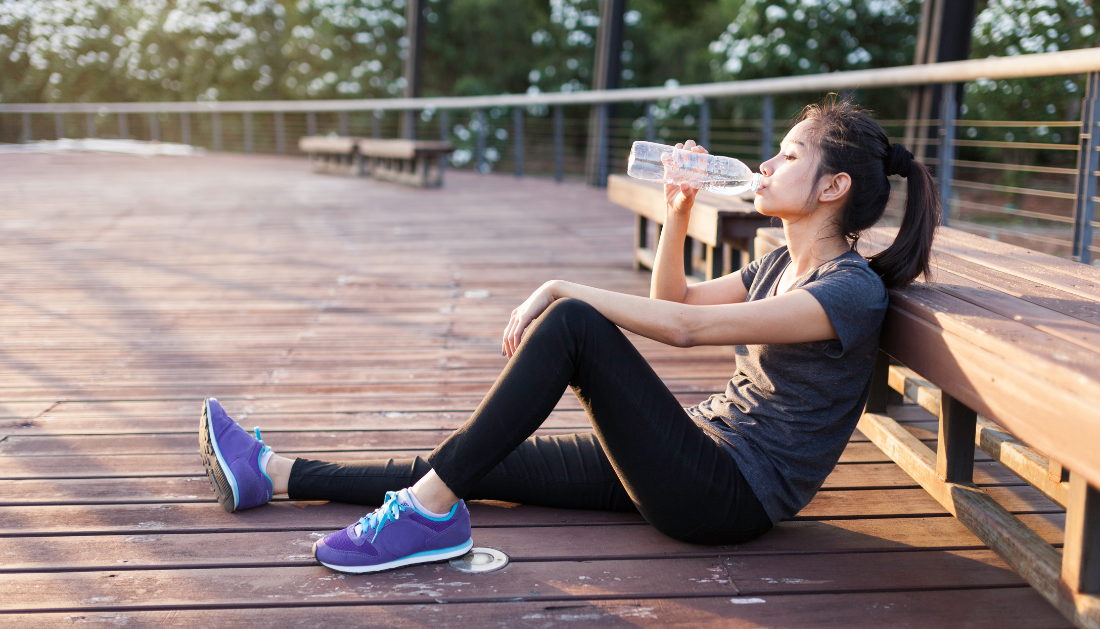

In a new study published in the Journal of the Endocrine Society, researchers investigated the effects of exercise intensity on ghrelin (a hormone generated in the stomach that causes hunger) and appetite.
Their findings suggest that high-intensity exercise may reduce ghrelin levels, resulting in better hunger regulation, with the response differing across men and women.
Background
Ghrelin is a hormone that is mostly produced in the stomach, although it is also released in minor amounts in other regions of the body. It was discovered in 1999 and is commonly referred to as the ‘hunger hormone’. It binds to the growth hormone receptor. It was primarily known for promoting the release of the growth hormone GHSR1a, but it has now been revealed to regulate hunger, energy, glucose, sleep, immunological function, and memory.
The hormone has two types. Deacylated ghrelin (DAG) is the most abundant form, accounting for approximately 78%, and either suppresses or has no effect on appetite, while acylated ghrelin (AG) is less abundant but actively binds to GHSR1s to stimulate appetite.
Acute exercise at the appropriate intensity can lower appetite, possibly via effects on ghrelin. Research relating appetite to ghrelin and exercise is scarce, however high-intensity exercise may raise blood lactate levels, decreasing AG and, as a result, appetite.
Current research has concentrated on moderate-intensity exercise in healthy young males, however the effects on women may be altered by estrogen. Identifying the correct exercise intensity could help men and women with their weight management efforts.
About the study
In this study, researchers looked at how exercise intensity affects ghrelin levels and appetite in males and females, hypothesizing that high-intensity exercise would greatly reduce AG and suppress appetite, with females having greater total ghrelin levels than males.
The study’s participants ranged in age from 18 to 55, did not smoke, had a body mass index (BMI) of 18.5 to 24.9, and had not changed their weight significantly in the previous three months. They did not have diabetic, hormonal or gastrointestinal issues, and were not taking hormone-altering medicines or exercising.
They fasted and abstained from nicotine, caffeine, alcohol, and strenuous activity before to measurement sessions. Following a screening process to determine body fat, peak oxygen consumption, and lactate threshold, participants participated in three sessions: a control in which they did not exercise, a moderate exercise session at the lactate threshold, and a high-intensity session at 75% of their lactate threshold and peak oxygen consumption.
Blood lactate was measured immediately following the sessions, whereas total ghrelin, AG, and DAG were saved to be evaluated later.
Findings
The study included six females (mean age 32.2) and eight males (mean age 43.1). Females had larger body fat percentages, triglyceride levels, and baseline DAG, whereas males had higher energy expenditure during exercise and peak oxygen consumption.
Total ghrelin levels were considerably lower in high-intensity exercise than in moderate-intensity exercise or control, and they decreased throughout time, especially between 40 and 180 minutes following exercise sessions. During high-intensity activity, women had the lowest total ghrelin levels, which were lower than men.
AG levels were lowest during high-intensity exercise and dropped significantly between 40 and 180 minutes following exercise. During high-intensity exercise, women’s AG decreased more than men’s, but there were no significant differences. High-intensity exercise resulted in lower DAG levels than the other two, with females having lower amounts than males.
High-intensity exercise also produced the most lactate, with higher levels reported between 10 and 90 minutes after exercise. Moderate-intensity exercise resulted in the greatest hunger score, but the other two did not differ much.
Satisfaction reduced over time, particularly with moderate-intensity exercise, although not dramatically. Fullness decreased marginally during 180 minutes but revealed no significant differences across conditions. Desire to eat was greater in moderate intensity than in control, and it decreased between 150 and 180 minutes after exercise. However, the control group had the lowest total appetite, which decreased over time.
Overall, ghrelin was strongly correlated with the urge to eat and hunger, whereas AG and TG were negatively related to satisfaction and fullness but positively correlated with appetite. In men, TG was positively connected with hunger, desire to eat, appetite, and body fat percentage, but negatively with satisfaction and fullness. In females, AG was favorably connected with hunger but negatively correlated with satisfaction and fullness. Body fat percentage was found to be adversely linked with hunger and appetite.
Conclusions
These findings indicate significant disparities between males and females in terms of how exercise suppresses appetite. Further research can look at the impact of obesity and employ chronic exercise programs to develop personalized exercise guidelines for obesity prevention and management.
For more information: The Impact of Exercise Intensity and Sex on Endogenous Ghrelin Levels and Appetite in Healthy Humans, Journal of the Endocrine Society, https://doi.org/10.1210/jendso/bvae165
more recommended stories
 Can Ketogenic Diets Help PCOS? Meta-Analysis Insights
Can Ketogenic Diets Help PCOS? Meta-Analysis InsightsKey Takeaways (Quick Summary) A Clinical.
 Silica Nanomatrix Boosts Dendritic Cell Cancer Therapy
Silica Nanomatrix Boosts Dendritic Cell Cancer TherapyKey Points Summary Researchers developed a.
 Vagus Nerve and Cardiac Aging: New Heart Study
Vagus Nerve and Cardiac Aging: New Heart StudyKey Takeaways for Healthcare Professionals Preserving.
 Cognitive Distraction From Conversation While Driving
Cognitive Distraction From Conversation While DrivingKey Takeaways (Quick Summary) Talking, not.
 Fat-Regulating Enzyme Offers New Target for Obesity
Fat-Regulating Enzyme Offers New Target for ObesityKey Highlights (Quick Summary) Researchers identified.
 Spatial Computing Explains How Brain Organizes Cognition
Spatial Computing Explains How Brain Organizes CognitionKey Takeaways (Quick Summary) MIT researchers.
 Gestational Diabetes Risk Identified by Blood Metabolites
Gestational Diabetes Risk Identified by Blood MetabolitesKey Takeaways (Quick Summary for Clinicians).
 Phage Therapy Study Reveals RNA-Based Infection Control
Phage Therapy Study Reveals RNA-Based Infection ControlKey Takeaways (Quick Summary) Researchers uncovered.
 Pelvic Floor Disorders: Treatable Yet Often Ignored
Pelvic Floor Disorders: Treatable Yet Often IgnoredKey Takeaways (Quick Summary) Pelvic floor.
 Urine-Based microRNA Aging Clock Predicts Biological Age
Urine-Based microRNA Aging Clock Predicts Biological AgeKey Takeaways (Quick Summary) Researchers developed.

Leave a Comment